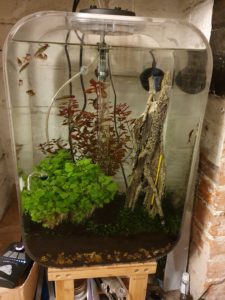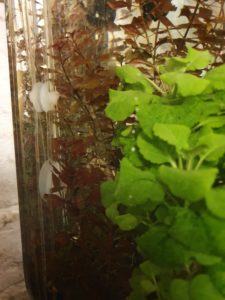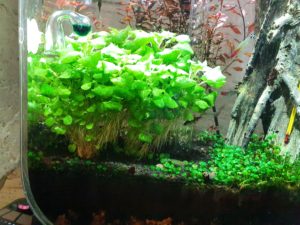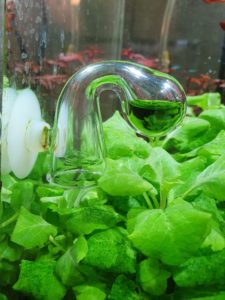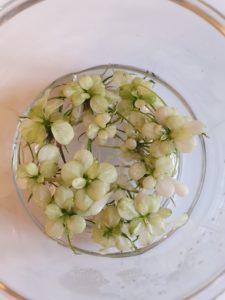
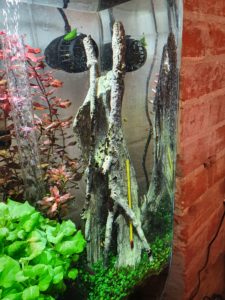
Anubias nana – ‘Snow White’
I was looking for an epiphyte to grow on the large sculpture in the aquarium which has lots of nooks and crannies that could be colonised. Such a plant has to be small and stay small. Narrowed down to either anubias or bucephalandra, one of the smallest is anibias “snow white” where the leaves are a very pale green. The conventional wisdom seems to be that absent significant chlorophyll (resulting in the whiteness), this plant is difficult/impossible to grow. There is some text on the interwebs relating, “in the Anubias Snow White plant, photosynthesis takes place exclusively in the rhizome and in the roots. Therefore the roots must always be left free.“
I picked up an in vitro grown pot from Riverwood Aquatics which arrived in fantastic-looking condition. Sure enough, the leaves are a creamy white with possibly the faintest green tinge, but the non-leaf bits are dark green.
